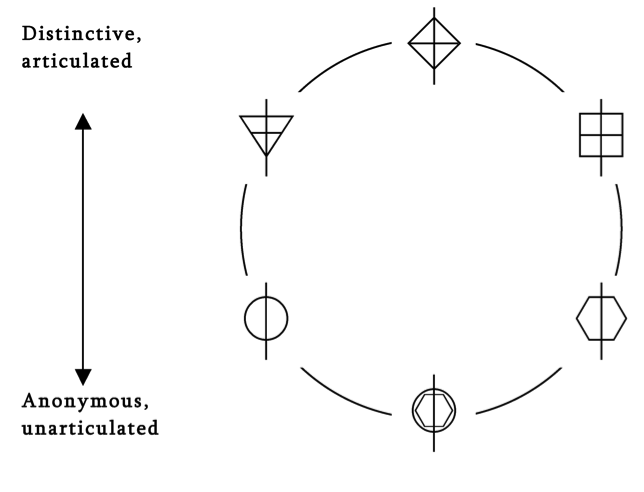| English | Français | Norsk | Definition |
| Typology of Form-building Elements | Typologie des éléments constitutifs des formes | Typologi av formdannende elementer | The typology of form-building elements is firstly of all based on characterizing their complexity.Next, the contrast between (integral) whole and divided elements and the contrast between line and texture will be observed. |
| Very simple element | Élément très simple | Enkelt element | Examples (lines): repetitive figures with one or a couple of pitches and even rhythmical values such as very simple accompaniment figures; (texture): single chords, monophony or basic homophony |
| Relatively simple element | Élément relativement simple | Relativt enkelt element | Examples (lines): articulated yet simple figures such as scales/passages or refined accompaniment figures; (texture): heterophony, or homophony with slight polyphonic elements. |
| Moderately complex element | Élément légèrement compléxe | Relativt komplisert element | Examples (lines): a classical, simple theme; (texture): a simple two- or three-part polyphony. |
| Relatively complex element | Élément très compléxe | Meget komplisert element | Examples (lines): complex themes with great diversity of pitch and rhythm; (texture): complex polyphony. |
| Very complex element | Élément hyper-compléxe | Overkomplekst element | Examples (lines): extremely asymmetric/irregular lines using a large number of values in an unpredictable manner; (texture): accumulations in electroacoustic and avant-garde music. |
| Paradoxically complex element | Élément de complexité paradoxal | Elementer med paradoksal kompleksitet | Very complex and the very simple meet in a paradoxical, ambivalent union. Ex.: Elements with myriad details, but with a perceptually simple overall character. |
| Distinctive / Articulated element | Élément distinctif / articulé | Distinktivt / artikulert element | Articulated elements consists of a number of pertinent details, Distinctive elements are i.e. thematic elements. |


